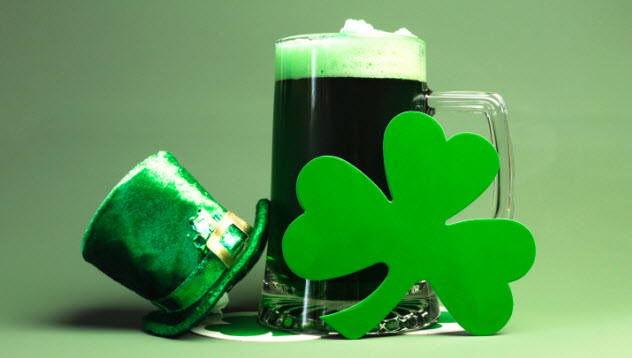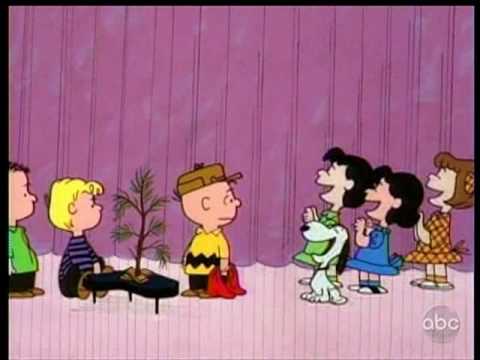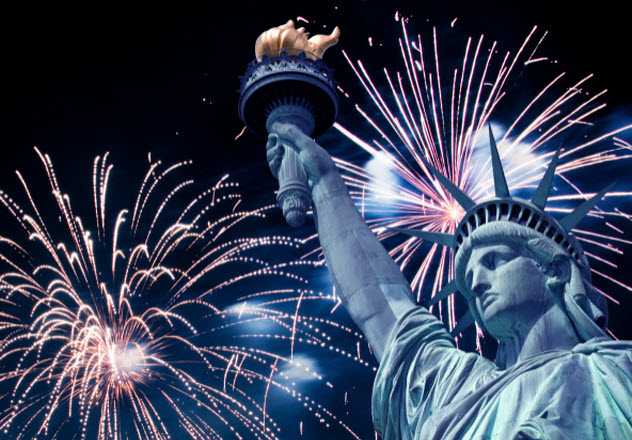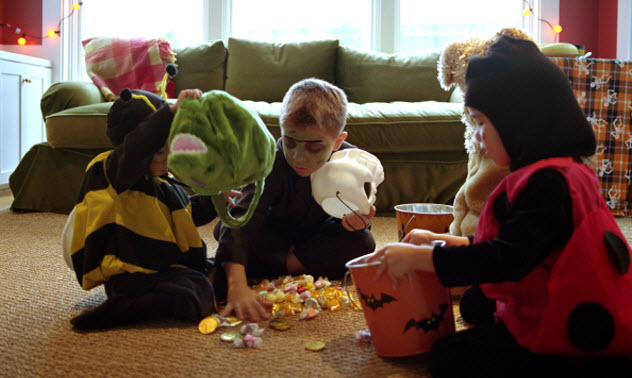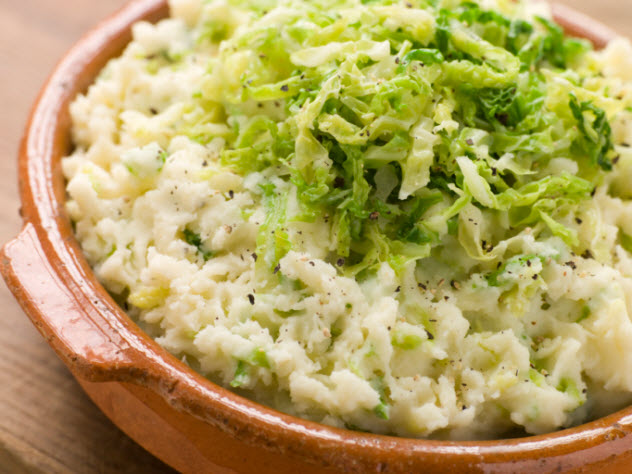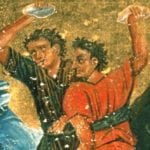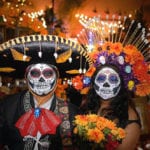10 The Origins Of Green Beer
On St. Patrick’s Day, everyone’s Irish. But if you ask anyone who’s actually from Ireland what they think of St. Patrick’s Day celebrations in the US, you’re bound to get more than a few baffled looks. For one thing, corned beef and cabbage isn’t a traditional food in Ireland. When Irish immigrants were trying to make ends meet in the US, they ate beef brisket and cabbage because they were the cheapest foods available. Traditionally, people in Ireland don’t drink green beer, either. Green beer was the creation of a Bronx coroner named Dr. Thomas Hayes Curtin. When Curtin was organizing the St. Patrick’s Day party for his social club, the German-American Schnorrer Club of Morrisania, he made sure there was plenty of food and his own special beer just for the occasion. Curtin was an Irish immigrant who had moved to the US from County Carlow when he was still a child. Even without his green beer, his career was impressive. He ran the coroner’s office during some of the worst disasters in New York City’s history, including the Slocum steamboat fire. After the death of his wife in a house fire, he was one of the first Americans to join French troops fighting in World War I. Although he was named “Bronx Citizen of the Year” in 1945, green beer became his lasting legacy. At the time, there were a few mentions in newspapers of bars serving green beer. But Curtin generally receives the credit for unleashing this rather odd custom on the American population, probably because we know exactly how he dyed his beer green—with laundry whitener. Known as “wash blue,” the iron powder was used to get whites sparkling bright again. When added to yellowish lager, it made the beer green. By the 1950s, the tradition of green beer was firmly associated with St. Paddy’s Day, with billions of green pints served every year.
9 New Year’s Resolutions
The start of a new year seems as good a time as any to promise to be a better person, to be healthier, or to do whatever else you’ve been putting off on a regular basis. But the idea of resolutions is an old one, dating back to ancient Mesopotamia. The first people to make new year’s resolutions were the ancient Babylonians, who promised to make good on outstanding debts and to return any borrowed property. However, their new year began with the spring harvest. For them, promises to the gods were spiritual rituals meant to keep things running smoothly for the rest of the year. Later, the Romans did something similar, making their resolutions in the name of Janus. On March 1, the original Roman new year, new officials were sworn in, and old ones joined them in committing to uphold laws and fulfill their duties. Around 300 BC, the start of the new year was moved to January 1. In addition to swearing in new officials, this earlier date gave the Romans enough time for leaders and soldiers alike to declare their loyalty to the emperor before the military embarked on their spring campaigns. As the empire grew, the military had to leave earlier each year because they traveled increasing distances to get to their battlefields. In 1740, more modern resolutions began to emerge when John Wesley created a new kind of church service. Held for those who wanted a quiet night of reflection instead of a party, attendees at the Covenant Renewal Services promised to continue their faithful service to God. Resolutions have definitely evolved over the centuries. According to Oklahoma State University, the first resolutions were more about reaffirming faith in God, making sacrifices, being more responsible, and becoming a better person on the inside. Today, people who make resolutions tend to select ones that are more about appearance.
8 A Charlie Brown Christmas Almost Didn’t Happen
Regardless of your feelings about the holiday, the Peanuts special A Charlie Brown Christmas is a timeless classic. But it almost didn’t happen. When Charles Schulz pitched the idea in 1965, it was considered so scandalous that CBS initially insisted they weren’t going to air the program. CBS didn’t think it was proper to broadcast a cartoon with characters reading from the Bible. In addition, Schulz had demanded that the show have no laugh track, saying that it wasn’t proper for what they were trying to do. The network and Schulz also went head-to-head over the voice actors. Schulz wanted kids, and CBS wanted adults, an argument that hit at the core of the Peanuts characters. The sound track was also a major point of contention. Network executives didn’t think that kids would like the music Schulz had selected. But Linus reading from the Gospel of Luke remained the elephant in the room. That scene lasts 51 seconds, long enough for network executives to believe that a potential hit would be ruined with a message that reminded people of the true meaning of Christmas. In a wonderfully ironic twist, commercialism saved the iconic tradition of A Charlie Brown Christmas. Schulz and the gang had the backing of Coca-Cola, which had initiated the project by asking animator, director, producer, and voice of Snoopy Bill Melendez to pitch an idea for a Christmas special to them. With Coca-Cola backing the Peanuts gang, CBS figured that they could show the cartoon once and when it flopped, take a big tax write-off.
7 Macy’s Thanksgiving Day Balloons
First held in 1924, the Macy’s Thanksgiving Day Parade is a tradition that continues to form the backbone of Thanksgiving celebrations across the US. But without its stars—the massive balloons—it would just be another parade. The balloons were the brainchild of German puppeteer Anthony Sarg. Born in Germany to a family of artists, Sarg first turned his attention to puppetry in 1917. Moving to the US after World War I, Sarg became famous for creating advertising, making toys, and designing elaborate window displays that still form an unmistakable part of our holidays. The first balloons appeared in the parade in 1927. They were more puppet than balloon, inflated with oxygen and carried by groups of people. By the next year, they were filled with helium and released at the end of the parade. The balloons, which included things like an 18-meter-long (60 ft) tiger, were an especially big attraction because Macy’s offered cash rewards to anyone who found and returned them. But what started as a way to attract both children and adults to Macy’s new toy department produced disaster as well. The first attempts at releasing the balloons ended when they exploded in the air. Safety valves improved the release function of the balloons, but with no way to steer, they crashed into nearby buildings. In the air at the time, ace pilot Clarence Chamberlain attempted to hook the slowly rising and ill-fated Felix the Cat balloon with his plane. Although he managed to hook the pig that accompanied Felix, the cat balloon got away, meeting its end when it became entangled in overhead wires in New Jersey. A 1931 hippo balloon was last seen about 160 kilometers (100 mi) off Rockaway Point, while the escape of Willie Red Bird nearly caused warnings to be issued to ships in the North Atlantic. In 1932, a female student pilot decided to fly directly into that year’s Tom Kat balloon. When the plane became entangled, the instructor with the student managed to shake off the balloon, although the student nearly fell out of the plane. Fortunately, they landed safely. Not surprisingly, 1932 was the last year for balloon releases in the Macy’s Thanksgiving Day Parade.
6 Fourth Of July Fireworks
Love them or hate them, fireworks are synonymous with the Fourth of July. Although America’s Independence Day should really be celebrated on July 2, town parks (and the occasional backyard) are lit by fireworks every July 4 as BBQs are eaten and beers are quaffed. Why fireworks? Because John Adams said so, that’s why. The day after the Continental Congress voted on the matter of independence, Adams wrote to his wife, Abigail, detailing just how the day should be celebrated in the following years. “It ought to be solemnized with Pomp and Parade, with Shews, Games, Sports, Guns, Bells, Bonfires and Illuminations from one End of this Continent to the other from this Time forward forever more,” he wrote. The next year, fireworks were set off over Boston and over the young nation’s capital, Philadelphia. Guns were also included, with ships along the Delaware River shooting their cannons once for each of the original colonies. After Congress had dinner, more guns were fired, including artillery and small arms. But it wasn’t until 1783 that Boston became the first city to recognize America’s birthday as an official holiday. However, America wasn’t the first nation to use fireworks as part of major celebrations. That honor most likely goes to India or China. Also, fireworks were originally military weapons. But when their unpredictability (and bright colors) made them unsuitable for combat, they were used for entertainment. From the beginning, there were people who hated them. The first time they were shown to royalty in China, the emperor Li Tsung presented them to his empress. Less than thrilled when one of the so-called “ground-rats” headed straight for her, the empress called an immediate end to the ongoing feast.
5 Poisoned Halloween Candy
The fear of someone putting poison or razor blades into kids’ Halloween candy is a largely imagined threat that came from a 1983 column by Abigail Van Buren (aka “Dear Abby”). Her piece reminded readers across the US about the dangers of Halloween, with all sorts of sick people trying to harm neighborhood kids with tainted candy. When her sister, Ann Landers, echoed the statement 12 years later, the myth became firmly entrenched in US society. A kid eating his candy before a trusted adult had the chance to check it for razor blades was supposedly courting death. While it’s unlikely that you’re going to find poison in your Halloween candy, there have been a few instances of candy-coated malice that resulted in random, potentially deadly violence. In 1964, Helen Pfeil found an odd way to tell teens that they were too old to be trick-or-treating: She gave them steel wool pads, dog biscuits, and clearly marked ant poison. Even though she told the kids what she was doing when she handed out their treats, she was still sentenced on a charge of child endangerment. While many other cases were hoaxes, there have been some terrifying times that adults took advantage of the myth with disturbing goals in mind. In 1974, Timothy Mark O’Bryan died after eating a cyanide-filled Pixie Stix. It had been given to him by his father, who was subsequently executed for the eight-year-old’s death. Only four years earlier, Kevin Toston had died of a heroin overdose just after Halloween. His candy was originally blamed. But investigators discovered that Kevin had actually gotten into his uncle’s stash of heroin and the family had laced the boy’s candy with it after his death to avoid prosecution for neglect. The first confirmed case of truly random violence related to Halloween candy didn’t happen until 2000, when James Joseph Smith handed out Snickers in which he’d inserted needles.
4 Hot Cross Buns For Easter
In many countries, hot cross buns are a staple food for the table during Easter weekend. You’ve probably heard some of the myths associated with this food. For example, if you share one with a friend, it’s supposed to strengthen your friendship. But a lot of the myths have to do with religion, like the belief that a 12th-century monk baked the first hot cross buns in honor of Good Friday. Another myth is that Queen Elizabeth I declared that hot cross buns were such an important religious symbol that it was a crime to eat them on any other day. Although we’re not sure that hot cross buns have anything to do with Easter’s religious symbolism, finding the truth is strangely difficult. According to the Oxford English Dictionary, the first mention of a “hot cross bun” occurred in 1733—well after our 12th-century monk or Elizabeth I. The reference came in a song: “Good Friday comes this Month, the old woman runs, With one or two a Penny hot cross Bunns.” Historians have also found some recipes dating back to this period. But it’s unclear if the baking of hot cross buns occurred any earlier. Some Roman-era sculptures depict loaves of bread scored with a cross, but that isn’t necessarily religious. The scoring may only be there to make the bread easier to break. Some scholars believe that the hot cross bun originated in the medieval era, tracing it to the schism within the Christian world. According to a Murdoch University associate professor, hot cross buns were controversial when Catholicism and Protestantism split. The newly formed Protestant Church believed that the traditional bread represented Catholic superstition, a sentiment that may be the real reason behind Elizabeth I’s ban of the bun. Today, hot cross buns continue to be controversial. Some religious figures say that with hot cross buns more widely available throughout the year, we’ve lost the power of a firmly established religious symbol. They’re so popular now that Britain’s Tesco sells three varieties all year and adds more flavors—like toffee and apple-cinnamon—around Easter.
3 Kale, Colcannon, And Candy
Halloween candy is a fairly recent addition to the holiday menu. As late as the 1920s, Scotland and Ireland had a bizarre form of trick or treat that didn’t involve candy at all. The last hours of October and the first hours of November have long been said to be the time of the spirits, the dead, and the supernatural. Playing games was a way to help spirits in the real world return to the otherworld. If they could impart some of their otherworldly knowledge while here, that was all the better. In Robert Burns’s 18th-century writings, he described an odd divination rite called “[pull] the stalks.” Rather than heading out for candy, single people of a marriageable age were blindfolded and led into the kale fields. Each dug up a stalk of kale, root and all. Once the plant had been pulled, the stalk was believed to give information about the person’s future spouse: short or tall, straight or crooked, healthy or withered. Tasting the kale hinted at the kind of person their future spouse would be on the inside: bitter, sweet, etc. Even the amount of dirt that stayed on the root was important. The more dirt, the better, as that meant the person would receive a large dowry or fortune from his or her partner. A clean root spelled poverty. Kale also appeared in a strange Irish meal. When the All Hallow’s Eve colcannon was cooked, objects were added to predict your future. Find a ring in your meal and you’d be married before the next Halloween. Find a thimble and it was the spinster’s life for you. Vegetables as the core foods of Halloween may seem strange today, but candy didn’t take center stage until the mid-20th century. As late as the 1920s, it was more common for kids to receive fruits, nuts, cakes, and little toys. Even into the 1950s, Kellogg’s marketed their cereals as the perfect Halloween treat. The candy industry didn’t muscle its way in until 1960, and it wasn’t until the 1970s that other treats got pushed out of the picture completely.
2 Wearing White And Labor Day
It might be one of fashion’s most often-repeated rules: Don’t wear white after Labor Day. Although there are plenty of explanations for this rule, no one can prove exactly why it was created in the first place. One of the major theories involves status. At a time when washing machines were scarce, it was impractical to wear white. So the color was reserved for people of a certain class, namely those who spent the summer months vacationing in exotic places and yachting. When summer ended, so did the freedom to enjoy wearing white without getting it dirty. Another theory is that wearing dark colors in sweltering summer heat just wasn’t a smart thing to do, especially when the high-fashion trends of the 20th century were mostly set in northern cities. With Labor Day and the end of summer, dark clothes were in again. But it wasn’t until the 1950s that wearing white after Labor Day became a fashion faux pas. Some theories suggest that it was a way to differentiate the classes, with the old-money, social elite knowing the rules while the upwardly mobile could be spotted immediately if they were uninformed. However, no one really knows how this bizarre tradition started or why so many of us continue to follow it today.
1 Lupercalia And Valentine’s Day
If you hate Valentine’s Day, you can blame the Romans, although their idea of Cupid’s festival looked quite different from our over-the-top displays of love and romance in mid-February. For the Romans, Lupercalia was celebrated from February 13 until February 15. Festivities started with the sacrifice of a goat and a dog, whose hides were made into whips. Two young men were baptized in blood, plied with food and wine, and then tasked with running mostly naked through the streets, hitting anyone they saw with these whips. Women actually lined up to get hit because this was supposed to increase their fertility for the coming year. As if that wasn’t romantic enough, the festival also included a matchmaking ceremony. A woman was paired with the man who drew her name in a lottery, and they were declared a couple for the rest of the festival—presumably with three days of enjoying all the benefits that went along with that. Believed to be a symbolic purification, the festival was celebrated in the name of Lupercus. Originally the god of fertility, he was later associated with the myth of the founding of Rome and the nursing of twins Romulus and Remus. In the third century, the Romans were known to have executed two men named Valentine, both on February 14 in different years. When the Catholic Church combined their martyrdom with the festival, it took on a more restrained aura. But it wasn’t until Shakespeare and Chaucer wrote about the holiday that it started down the sickly sweet road that it’s on today. Read More: Twitter
